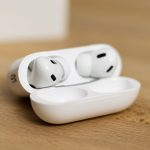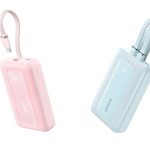Editor’s Note: This article is a reprint. It was originally published February 8, 2017.
The availability of clean, pure water is vital to your health. An adult body is between 55% and 65% water.1
Water functions to regulate internal body temperature, metabolize carbohydrates and proteins, flush waste through your kidneys and help lubricate joints. Water is foundational to your overall health and wellness.
In 1972, the Clean Water Act2 was approved to regulate the discharge of pollutants into U.S. water systems and to set quality standards for surface water. The goal was to ensure a clean water supply. However, after more than four decades of regulation, U.S. waterways are in serious jeopardy.
Toxic runoffs from industry, agriculture and suburban areas threaten the health of plant and fish life in fresh and saltwater areas. The growing number of toxins and pharmaceutical products discovered in surface water is an ultimate prediction of the health of those required to drink the water and eat the animals who live in it.
Most tap water is also far from pure, containing fluoride, radiation, heavy metals, pharmaceutical drugs and industrial chemicals. Each of which has negative health effects on the animals and humans who consume them. Too often, the wild animals who absorb the chemicals are later eaten by humans.
Pharmaceutical Pollution Affecting Keystone Species
Pharmaceutical drugs make their way into waterways when treatment plants can’t filter out medications improperly disposed of, or flushed down the toilet and into the septic tank as they are eliminated from your body.
Researchers evaluating the water from Puget Sound in Washington State found 81 different drugs and chemicals which were not removed by wastewater treatment.3 These drugs that are seeping into ground and surface water have a domino effect on the plant and animal life depending on that water to sustain life.
Paul Moore, Ph.D., ecologist at Bowling Green State University Laboratory for Sensory Ecology, published research demonstrating that even at low levels, pharmaceutical medications have a significant impact on wildlife.4
The study was prompted when fishermen reported fewer crayfish in Michigan. During the study, crayfish were exposed to naproxen, a common over-the-counter pain reliever. Crayfish were chosen as they are a keystone species, one that other animal species depend upon for food.
If crayfish die off, so will the trout and bass that depend upon them, leading to an overgrowth of algae and subsequent death of invertebrates as the algae uses all the oxygen in the water.
The result of exposure to naproxen led the crayfish to act less aggressively, likely triggered by a reduction in sense of smell.5 Crayfish depend upon their sense of smell for cues that are critical to their survival. Moore commented on this apparent lack of aggression in crayfish exposed to naproxen:6
“When they start to fight, they release chemical signals back and forth, and inside these signals are anything from the sex of the animal to the reproductive state, even a type of identity so they know if they fought this guy yesterday or the day before.
So, if you block that ability … they fight more intensely or less intensely based on the amount of exposure they have.”
According to Moore, non-prescription based medications are the fastest growing source of pharmaceutical waste. The Great Lakes supplies nearly 40 million people with water. Lyman Welch, former legal director for the Alliance for the Great Lakes, compared crayfish to the canary in a mine, saying:
“The effects on fish and aquatic life can be a real indicator of concern for humans. The fact that pharmaceuticals harm fish can act as a canary in a coal mine and give us a warning that we need to pay more attention.
There is no known [human] health risk at the low levels of the chemicals that are being found right now, but our detection levels have improved, and we are starting to see these chemicals. And there is a need to do additional research to better understand the impacts of these chemicals.”
Community Disposal
The Alliance for the Great Lakes supports making pharmaceutical companies shoulder some of the cost for disposal of medications.
Cook County, Illinois, located on the shores of Lake Michigan and home to over 5 million people, passed an ordinance mandating pharmaceutical companies help pay for the cost of disposing of medications.
Some counties have banded together to provide citizens with drop-off points for medications and personal care products to reduce exposure in the waterways.
One program developed a coordinated effort between pharmacies, hospitals and law enforcement in Upper Michigan, collecting 12 tons of prescription drugs, over-the-counter medications and personal care products in the past nine years.7
Prevention is the primary key to reducing pharmaceutical pollution, as there are no current viable solutions for removing pharmaceutical waste once it has reached surface and groundwater supplies. Improving filter systems in septic and wastewater treatment plants is also essential to reducing toxic pollution.
Some experts report that up to 93% of drug compounds leave the wastewater treatment plants, and according to the U.S. Geological Survey, 80% of U.S. waterways contain pharmaceutical pollution.8 There are many sources of water pollution, not the least of which are pharmaceutical drugs that make their way through wastewater treatment plants.
The need for preventive action was recognized by ecology groups for decades, and by medical groups.9 The need for proper disposal of pharmaceutical products, including personal care lotions, creams and perfumes, is paramount to the reduction of water pollution.
By limiting your bulk purchases, using drug take-back programs and not flushing any medication down the toilet, you may help to reduce your personal pharmaceutical footprint.10 The effect of the drugs found in surface and groundwater work their way up the food chain, as fish and plants are exposed to the toxins.
In one collection of smallmouth bass from the Northeastern U.S., 85% of the males had eggs growing in their testicles.11 A meta-analysis of the effect of pollution on amphibians (frogs, toads and salamanders) demonstrated a decrease in survival rate and a 535% increase in abnormalities across all studies.12
Drugs Pass Municipal Water Filtering
Researchers concluded the overall impact was moderately to largely negative and posed an important threat, likely playing a role in global population decline.
Low concentrations of drugs have been found in surface and groundwater since the early 1990s.13 Now, as the water comes full circle, concentrations of commonly used medications are being found in tap water.14
Traditional water treatment plants are not equipped to filter small, soluble pharmaceutical drugs before discharging sewage water into the environment, or filtering water that flows from your tap.15
In a study by the U.S. Environmental Protection Agency (EPA), researchers looked at samples from 50 different large wastewater treatment plants nationwide for 56 drugs, including hydrocodone, over-the-counter pain medications and high blood pressure drugs. Mitchell Kostich, Ph.D., EPA research biologist and lead author, commented on the results, saying:16
“We were surprised to find that many drugs occurring across all the wastewater plants. We were also surprised to see so many drugs of a particular class — the high blood pressure medications — appear at those levels across the board.”
Researchers have also discovered that many antibiotics pass through your system unabsorbed, and nearly unchanged, as they are excreted.17
In agricultural areas, these drugs enter the groundwater through discharges from animal feeding operations, or into your toilet when antibiotics are prescribed. This combination may contribute to an increasing challenge with antibiotic resistance.
A U.S. Geological Survey (USGS) study conducted in Iowa demonstrated effluent from a nearby treatment plant contained between 47 and 58 different pharmaceutical medications in the water and up to 17 medications were detected 65 feet (20 meters) from the stream bank.18
The drugs found 65 feet from the stream bank included antibiotics, muscle relaxants, antidepressants and drugs to treat cancer, diabetes and hypertension, in concentrations as high as 87 nanograms per liter (ng/L).
Is There Greater Use or Less Removal?
Researchers theorize the increased amount of drugs detected in surface water, groundwater and running from the tap, is a function of both improved detection methods and an increasing reliance on drugs. In a study released by Mayo Clinic, researchers found 70% of Americans took at least one prescription medication and 20% were on five or more medications each day.19
Health officials continue to reassure the public that the compounds found in tap water and wastewater do not pose a threat to human health. However, they also acknowledge there’s no good way to predict the effect this pharmaceutical cocktail will have on either human health or aquatic life.20
Jim Meadors, Ph.D., environmental toxicologist and lead author of the research done in Puget Sound, was surprised by the concentration of drugs found in the effluent and believes that “a substantial load of potentially harmful chemicals are introduced into streams and nearshore marine waters daily.”21
Researchers further believe if the two plants sampled represent the others in the area, nearly 300 pounds of contaminants may enter the Sound every day.
In another study of effluent released into a river ecosystem, researchers determined the reduction of pharmaceutical concentration was effective for only five of 19 medications studied, and ibuprofen was filtered by only 50%.22 The research demonstrated the attenuation of drugs in this system could be mathematically predicted.
Reduce Your Inadvertent Intake of Medications
It will require a change on a global scale to stop the water pollution that’s already taking a health and environmental toll. But, you can make changes at home that will help protect you and your family.
Considering the widespread contamination found, it’s best to assume your tap water is less than pure. If you would like to have your water tested, the most comprehensive test kit I recommend is from National Testing Laboratories. To be certain you’re getting the purest water you can, filter the water both at the point of entry and at the point of use. This means filtering all the water that comes into the house, and then filtering again at the kitchen sink and shower.
Unfiltered water can also expose you to dangerous chlorine vapors and chloroform gas. The U.S. Food and Drug Administration (FDA) and other U.S. government agencies report most American homes have measurable levels of chloroform gas, courtesy of chlorinated tap water. If you can afford only one filter, buy a shower filter, as the chlorine aerosolized through your shower is inhaled and absorbed through your skin, surpassing the damage done by drinking water.
Unless you have a whole-house water filter, chlorine will vaporize from every toilet bowl in your home and every time you wash your clothes or dishes, or take a shower or bath. Chloroform gas, chlorine vapors and the associated dangerous disinfection byproducts (DBPs) may increase your risk of asthma, airway inflammation and respiratory allergies. Chloroform gas alone can cause dizziness, nausea and general fatigue.
If you get your water from a municipal water supply and don’t have a whole-house filter, it really is important to open up windows on opposing sides of your home so you get cross ventilation. Keep the windows open for five to 10 minutes a day to remove these gases.
One of the best types of filters for your home will use a three-stage filtration process — a micron sediment pre-filter, a KDF (kinetic degradation fluxion) water filter and a high-grade carbon water filter. This combination filters chlorine, DBPs and other contaminants.






